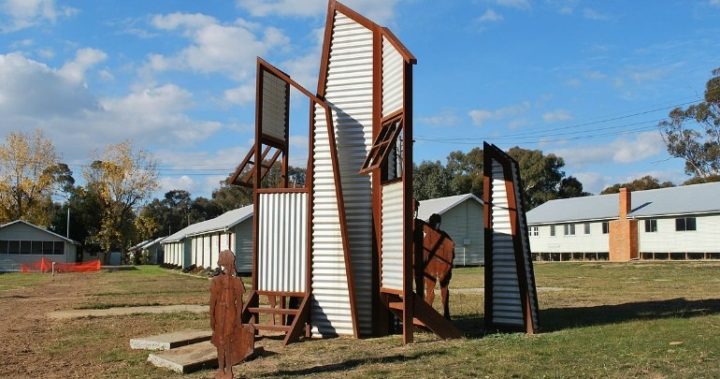
Living in the street where I grew up, there were people from many different countries. It was the mid-1950s and Australia was experiencing a period of immigration from many countries torn apart by the Second World War.
Our old home was a dairy and my father milked around 100 cows per day. We also had chickens and Mum grew many of the vegetables we ate, as well as working outside the home.
Next door was a German couple, such learned, educated people who had been forced to leave their home because one of them had Jewish roots. I loved visiting Mr and Mrs W, picking up a smattering of German and developing a taste for “foreign” food such as black bread.
In the 1950s in Australia, food was good, fresh and plentiful, but rather plain. I remember having heaps of mint growing in the backyard and a huge rosemary bush outside my bedroom window, but that was about the limit of the herbs found in our garden. Curry powder, pepper, salt and mixed herbs for the chicken stuffing rounded out the seasonings I remember. We ate spaghetti out of tins, served on toast for breakfast or as sandwiches for school lunches.
But then an Italian couple, Mr and Mrs S, moved into our street and Mum learned to cook spaghetti with various sauces containing such exotic herbs as oregano and basil. To the horror of her friends, she also added smelly cheese to her menu, grated (so she said) to add flavour to her weird spaghetti. I’ve often wondered how many born-and-bred Aussies ate their first real spaghetti in my mother’s kitchen.
This revolution in food was further extended when Mum learned how to make various pastries from the Hungarian lady who moved next door to the Italians. This influx of migrants meant that market gardens sprang up in our street, as did a fully operating organic egg-producing farm. Our diet was being expanded, but we kids also looked forward to the birth of new babies, because we were invited to wet the baby’s head in grappa every time we visited. Can’t believe how many opportunities we found to visit the new baby until our parents woke up what was happening.
The migrants from Italy, Malta, England, Germany and Hungary brought not only food, they brought knowledge with them. My parents befriended everyone and as they learned English, we learned about their homelands. Even so, when in later years I learned about the hardships they faced, I finally understood why they moved to Australia.
Recently a friend whose maiden name is Grima said she was brushing up her Maltese for a weekend with the relatives. She only speaks Maltese occasionally when she meets up with her siblings and some older relatives. For my part, I had forgotten she was born in Malta, arriving in Australia as a two-year-old.
So what has suddenly brought to mind my childhood – why this sudden walk down memory lane remembering my multicultural upbringing with the migrants I knew in early childhood?

I have just started reading The Last of the Bonegilla Girls by Victoria Purman (#mybonegillastory) which is based on fact and tells the story of three young women who lived in the Bonegilla Migrant Camp in Victoria.
I remember the Villawood Migrant Camp in New South Wales and if memory serves me correctly, some teenage girls from there attended my alma mater. When I checked with one of these women, I learned that, yes, she had lived at Villawood for a few months after arriving in Australia, but by the time she started secondary school, her family had moved into a house, as her father was quickly employed.
I still find it hard to imagine what it took for so many of our migrants to pack up and come to Australia but I know our food and culture are all the richer for their settling in Australia. I’m trusting I’ll add to my understanding by reading The Last of the Bonegilla Girls and as I read I’ll no doubt travel back to Jasper Road and remember fondly our neighbours who added so much to a young girl’s life – even if I didn’t know it at the time.
Have we any people in our community who lived in a migrant camp when they arrived in Australia? If so, I’d love to learn your story please share your stories with me via email at [email protected].
Happy reading and remembering.
Karen xx